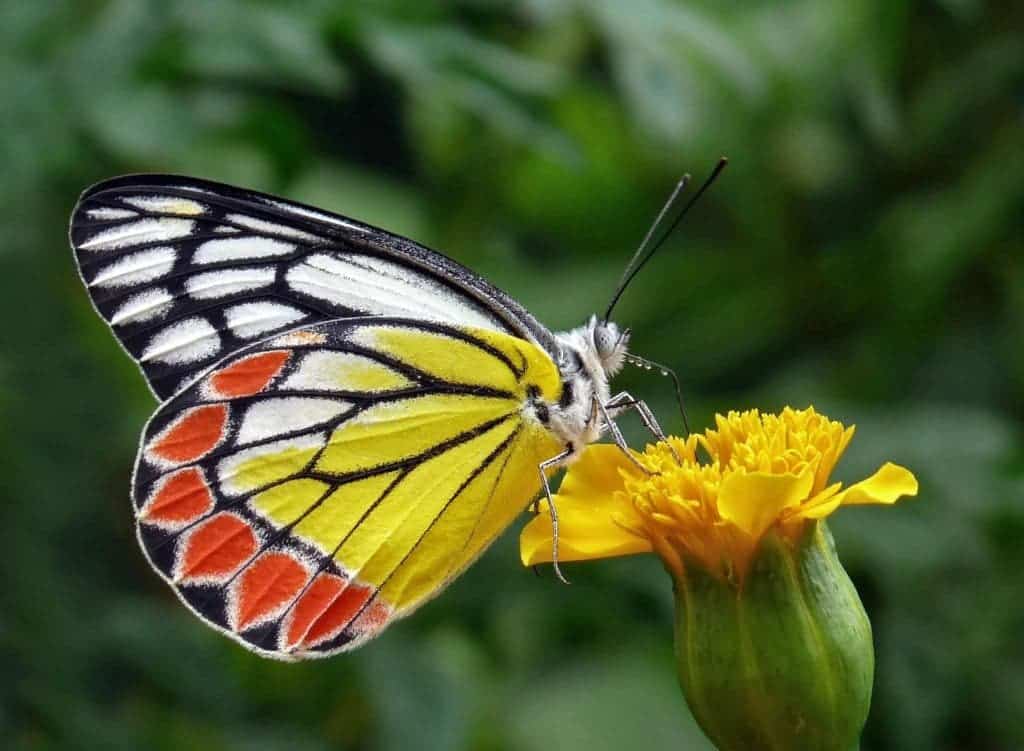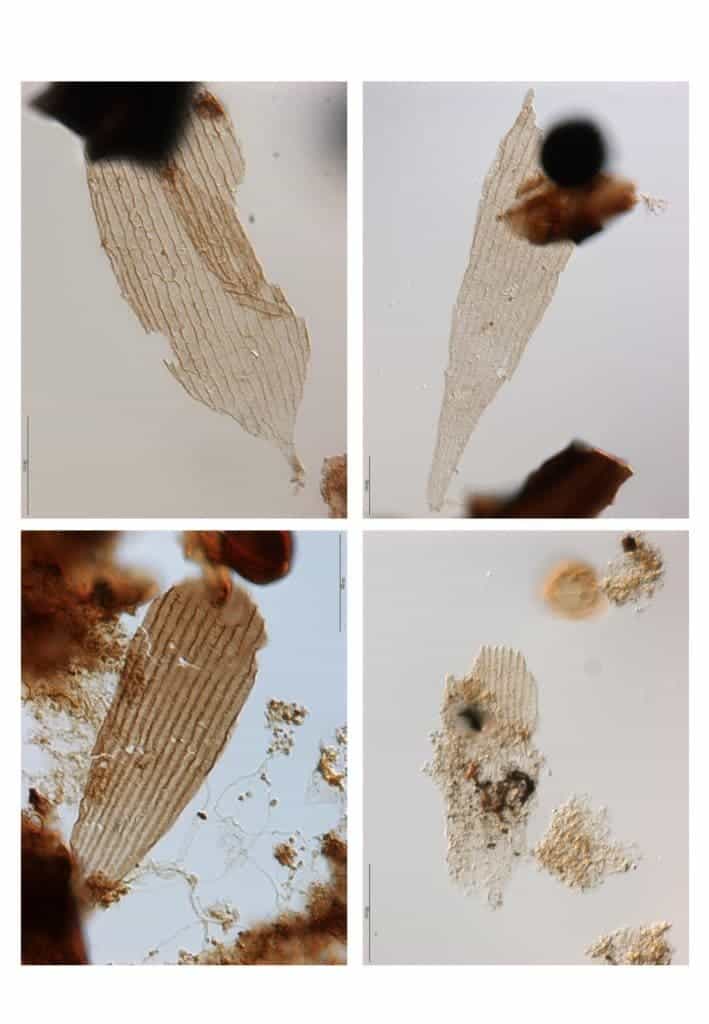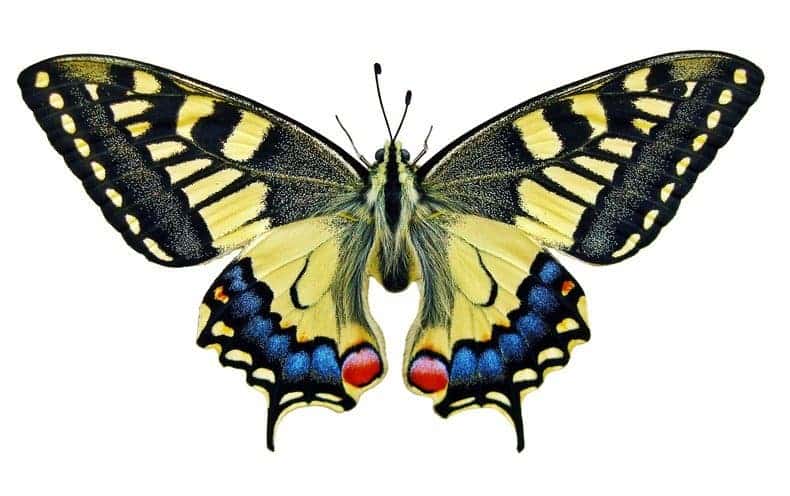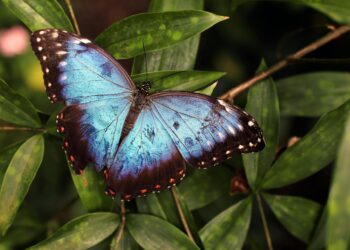After an unusual set of events, paleontologists have discovered fossil evidence that Lepidoptera — a group of insects which features butterflies and moths — emerged at least 200 million years ago. This contradicts the idea that flowers drove the evolution of butterflies and moths.

Butterflies and rocks
Boston College Research Professor Paul K. Strother was visiting a colleague in Germany. He was also gathering cores from sedimentary rocks, looking especially for vestiges of freshwater algae, but also pollen, spores, pieces of plants and insect legs — anything that could help him recreate the area’s history. Among these samples, he noticed several rather odd-looking flecks of material.
It wasn’t the first time something like this was observed. Paleontologists typically ignore such features, focusing instead on things like pollen or spores, which offer more consistent information. But the specks were abundant in Strother’s samples, so he analyzed them more carefully. He dissolved the cores in a solvent, preserving only the organic matter. He was able to isolate the strange features but wasn’t able to identify them. Until luck struck, that is.
After about a year, Strother found himself seated next to Torsten Wappler, a University of Bonn scientist who specializes in extinct insects. As it so often happens when social events bring scientists together, a partnership was struck. Strother showed the images to Wappler, who said that it would be possible to identify them, though it wouldn’t be easy. Identifying microorganisms, especially in unusual samples, typically involves a lot of routine, monotonous work. So again, as it so often happens… the two asked an undergraduate to do the brunt of the work. Timo J. B. van Eldijk was up for the task
“Timo is the guy that did all the work,” Strother remembers.

As it turned out, the features were scales from the wings of moths and butterflies. Using a light microscope, and later a scanning electron microscope, he concluded that they were the wing scales that give butterflies their characteristic, brightly colored aspect. In total, Timo discovered 70 specimens in the 201-million-year-old sample taken from 300 meters below Earth’s surface. But there was even more.
The real shocker
The investigation revealed that there were two types of scales. The first one was the “primitive” one, with a set of scales that was solid all the way down. But there was another discovery: a different type of scales, which was hollow. This was “the real shocker,” researchers say, as it represents modern Lepidoptera, a group of insects which were thought to have a tight evolutionary history with flowers.
As theory has it, this group evolved their proboscises (long and mobile sucking mouthparts) as a response to flowering plants. Plants had nectar, and the insects wanted that nectar, so they adapted in order to better reach it. But the theory, it seems, is wrong. According to the fossil record, plants didn’t develop flowers until 130 million years ago, and this sample is 201 million years old, from the Jurassic.
“The consensus has been that insects followed flowers,” said Strother, a co-author of the paper. “But that would be 50 million years later than what the wings were saying. It was odd to say the least, that there would be butterflies before there were flowers.”

During the Jurassic, the dominant group of plants was the gymnosperms, a group which includes conifers such as pine trees — not what you’d expect to find butterflies around. Researchers aren’t exactly sure why insects would have developed proboscises without flowers. The best theory is that they were trying to drink pollen from conifer cones. It could also be that the flower fossil record is missing, or that these elongated mouthparts had another purpose entirely.
Still, it’s not without precedent for one biological part to emerge for one purpose only to later change its purpose completely. The rocks date from a period right around the Triassic–Jurassic extinction event, when numerous creatures went extinct. Butterflies might have taken advantage of this and diversified, filling up all the ecological niches they could. The new research suggests that butterflies are survivors.

Science at its finest
It will take more cores, more samples, and more grunt work before the story of the early Lepidoptera is solved, but this is a great example of classic science: starting not with a plan, but rather with a curiosity. Researchers were intrigued by what they found, and after one thing led to the other, they might have changed the evolutive history of an important group of insects. In my view, modern science needs much more of this.
“This is the old-fashioned science of discovery,” said Strother. “We’re looking at this microscopic world of things that lived hundreds of millions of years ago and we don’t know what they are. The challenge is: can we figure out what they are? Part of it is piecing together the tree of life, or the evolution of organisms through time. It is more like a puzzle or a mystery.”
Journal Reference: Timo J. B. van Eldijk et al. A Triassic-Jurassic window into the evolution of Lepidoptera. DOI: 10.1126/sciadv.1701568.






